Y Filltir Sgwâr/The Square Mile: Thank you
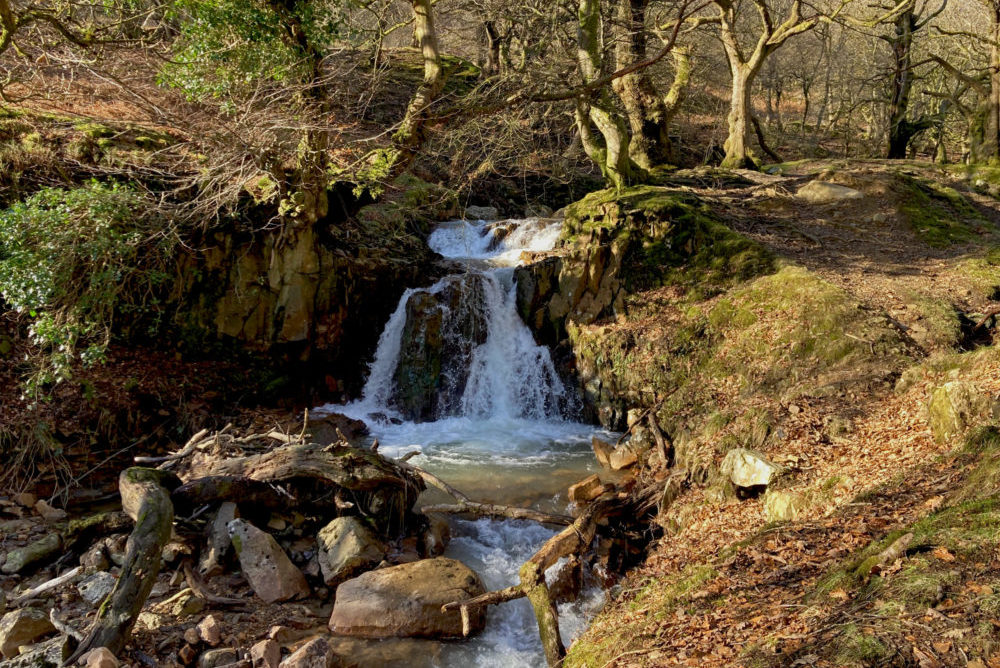
The final piece in our year long series in which Tom Maloney, from Abersychan, shows how you can love a place so well it becomes a part of you.
It is so hard to believe that twelve months has gone by since writing the very first article about Cwm Ffrwd and now here I am writing the very last feature for ‘Y Filltir Sgwâr’.
Where does a year go? It’s true what they say about the passage of time … the older you get, the quicker that time flies.
So, in preparing to write this one I have exercised my thoughts long and hard over the past few weeks about how to bring the series to a close.
My local landscape has of course been at the heart of every feature. The secretive, wooded little valley of Cwm Ffrwd where I began, is a beautiful, magical, enchanting place and I went there one more time this week just to bring together the threads in my thoughts.
Coal mining
I believe that someone in the past ensured that this lovely valley remained untouched by the ravages caused by coal mining that are so evident all around this woodland oasis.
As I wondered about things the direction of my thinking turned to those articles where people were hugely significant in bringing to life the stories that are so very often hidden from sight, creating very special moments along the way.
It brought home to me that you cannot separate the story of people and the story of the landscape, so this little article is a thank you for their wonderful contributions.
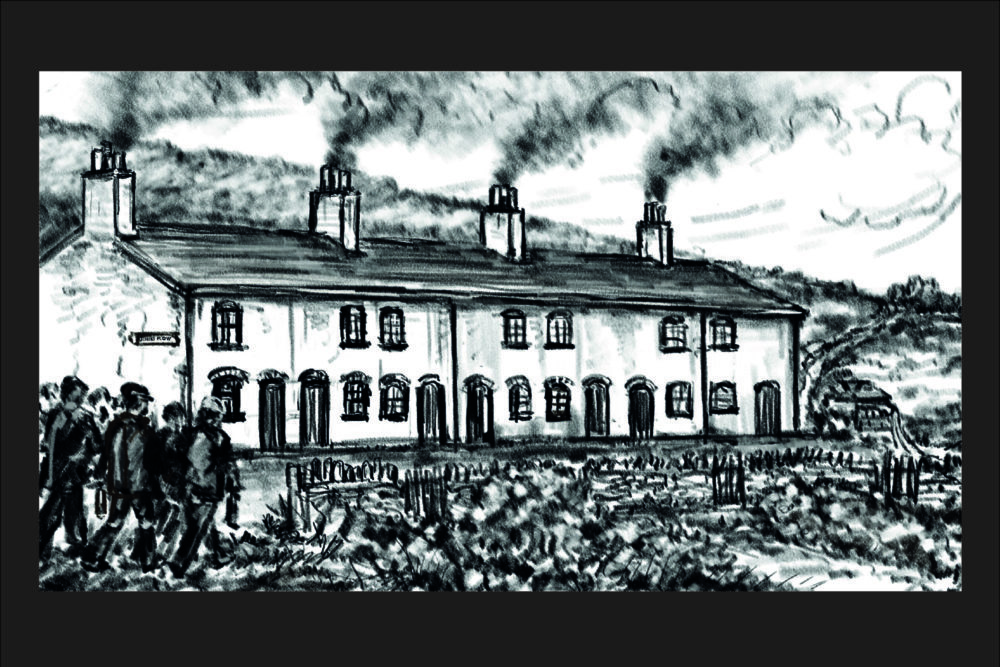
The British – With Mike SmithA chance conversation with my neighbour Mike Smith about ‘The British, Abersychan’ was the catalyst for whole new understanding of an old industrial landscape, where iron was the master and coal became the king. It is a place where I frequently walk.
Mike was brought up at ‘The British’ and spent his younger years living at John’s Row, which was known locally as a terrace of miner’s cottages. At this time his father worked underground as a collier at Blaenserchan Pit, which was just over the hill.
The family left ‘The British’ when he was about eight years of age, but Mike’s memories of childhood are clear and strong. We spent several very pleasant hours exploring the hillside where the cottages were once located.
Mike’s recollection is such an important record of social history and it gave me an opportunity to imagine how the houses may have once looked in a little sketch.
You would hardly believe there was a terrace of houses there at all now, but there were seven cottages in total. Each of the houses had water and electricity, but there was no bathroom!
“I remember we used to have a long, narrow tin bath and the toilet was at the bottom of the garden. I can’t remember if we shared the toilet with next door.
Ty Bach
It was a proper Ty Bach with brick walls, a corrugated iron roof and you sat on a plank of wood. Throughout the winter there was an oil lamp and the paper we used was ‘The News of The World’ cut into squares hanging on a nail, on the wall.
Although we had running water at No.1, I think that some of the other rows may not have had a water supply in their houses because I remember people fetching water from our outside water spout.”
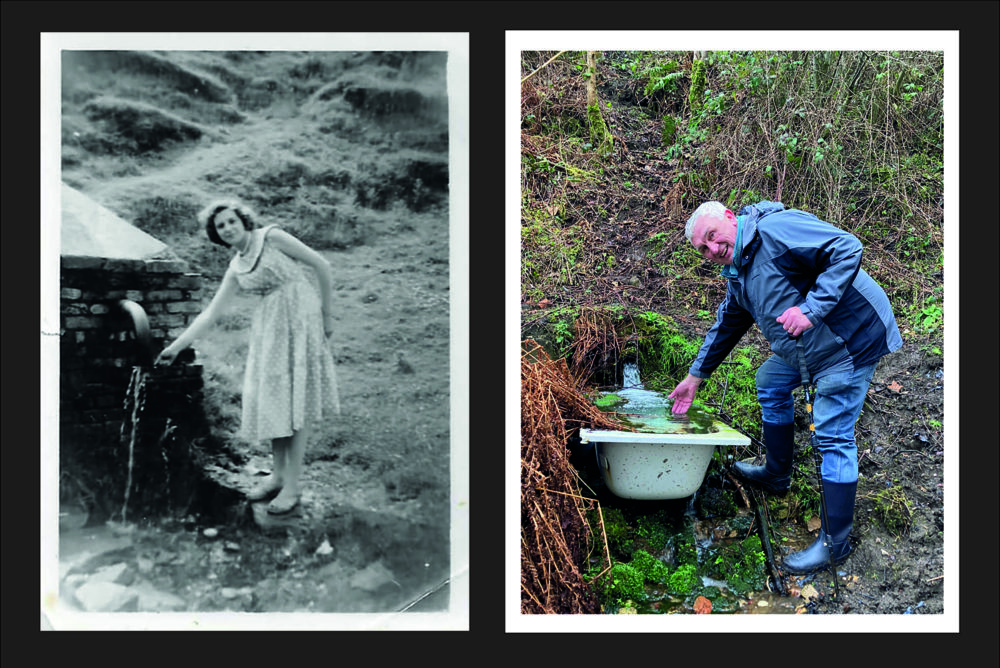
Blaenserchan Colliery – With Phil Watkins
I really enjoy connections and about three months later I was again fortunate to be joined on a walk by Phil Watkins, this time to the site of Blaenserchan Colliery where he had worked as an electrician for eleven years until it closed in 1985.
I had taken some photos and done a little sketching onsite in the 1980s, but in recent years I have walked the old pit road many times, often wondering why I did not take more photos then and try to record some of the life of the colliery as well.
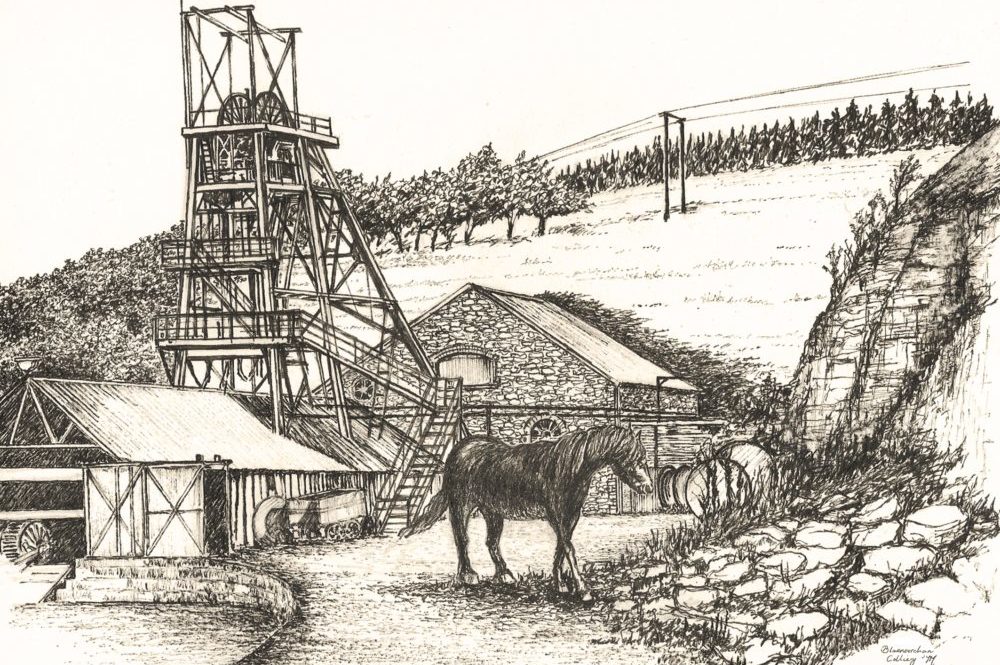
The opportunity to visit the site where the pit once stood was just too good to miss. Phil who grew up in Garndiffaith, followed in his grandfather’s footsteps, also from the ‘Garn’, in working at Blaenserchan.
From the outset of our meeting, I felt like I was learning, the kind of learning that keeps you wanting to know more, where you feel like you are on the edge of your seat and it was so evident that this was a part of his working life that really meant something to Phil.
“It was fantastic, absolutely fantastic. I have never heard anybody that worked in Blaenserchan say that they wouldn’t go back there tomorrow. I am the same, as much as the conditions were horrible underground, as a mine could be … everyone had your back!”
Those last four words ‘everyone had your back’ have stayed in my mind ever since and I think I must have repeated them on many an occasion in other conversations.
They really make you appreciate that the work underground needed special relationships where people looked out for each other’s welfare. There was a bond of trust.
As Phil expanded on his work as an electrician, I realised for the first time that collieries are like icebergs, that what you see on the surface is in reality just a fraction of their true size.
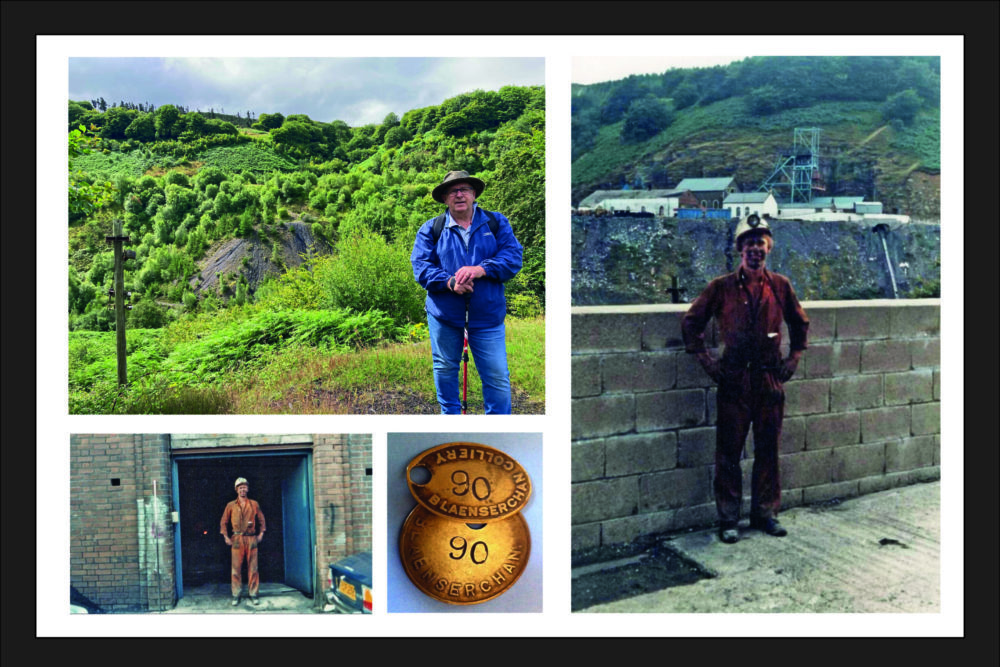
Phil’s work could take him far and wide underground.
“Very often we would be working so far in, that it was quicker to come out by walking to Six Bells pit bottom and get a Landrover back … because we were electricians, we were expected to work on kit out in the distant reaches of the workings. Horrible to walk mind you, in the damp and the dark and sometimes we’d be walking a long time with all our tools!
The charge on your battery would normally last a shift, not a problem, but if you were working a ‘doubler’ or something like that it could start to fade towards the end of the shift.
Then it would be time to adjust the settings on your lamp – dip and dazzle we would call them – dip was a shallow light, which would light up a small area around you. You would turn the lamp to dip and walk pretty slowly then!”
Celebrating World Heritage – With Sharon Ford
Living on the fringe of the Blaenafon World Heritage Site gives me such a feeling of pride and I have a great sense of connection with the layers of history that lie within this landscape, though for good measure I always think of Abersychan, Talywain and Varteg as part of the world heritage treasures as well.
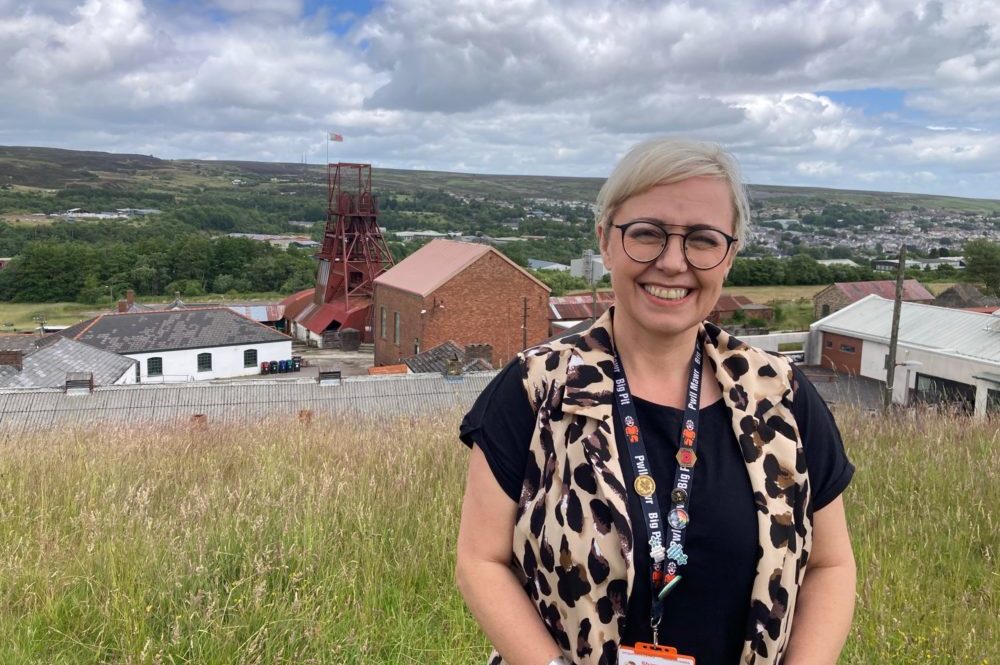
In the summer I caught up with Sharon Ford, the Learning Manager at Big Pit National Coal Museum and Chair of the Board of Blaenavon Workmen’s Hall. Sharon shared something of the sense of belonging which is the bedrock of the community.
“Thinking about World Heritage Day this year I was so proud to see it being delivered as it was by the community. This year, more than any year the community really picked it up and took hold of it and made sure it was the celebration it should be.
It is such a big, important part of the community now. We are all really proud of who we are and of where we come from, our World Heritage, Big Pit, The Ironworks and the Workmen’s Hall and everything!”
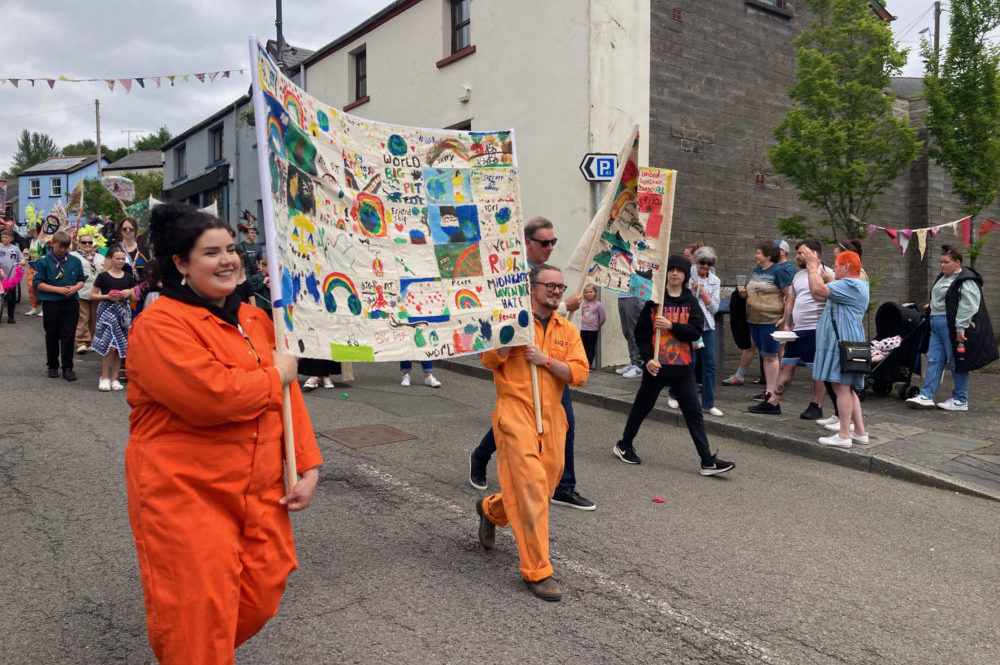
Sharon also runs ‘Grŵp Glo’ an inter-generational group from Big Pit and working with Cadw, Blaenavon Ironworks, Blaenworkmen’s Hall and the Community Museum this year the group created banners of belonging in the tradition of Mining Lodge Banners for World Heritage Day.
“The group itself brings people of all ages together, real friendships have formed between different generations and when you see that it is magical, absolutely magical. The banners are a celebration of what it is that makes you feel a sense of belonging.”
And what about carrying the banners?
For Antonella Chiappa and Ben Price, who are learning officers for Amgueddfa Cymru at Big Pit it was a special moment.
“So, what happens in that parade is a point of continuity between people now in Blaenavon and people in the past over the last two hundred and fifty years.”
Blaenavon’s Heritage Railway
The old railway line between Abersychan and Blaenavon has featured several times over the series, but without doubt my absolute favourite railway inspired article was an opportunity to show a little of what it takes to keep Blaenafon’s Heritage Railway running.
You have to physically have a railway of course, with everything that comes with this, track, stations, sidings, engine sheds but most important of all it takes a great team of volunteers to make sure that everything gets done from meeting and greeting passengers to the regular maintenance.
Let’s get a little snapshot of two of the volunteers who make things work, Nic Faill and Sophie Martin.

Nic, who is a teacher in her ‘day job’, is one of three female guards who volunteer regularly for the railway and relishes the responsibility of being a guard. This may be a heritage railway, but safety is taken just a seriously as if it was a mainline operation.
“The guard is the eyes and ears of the train and has the responsibility for the safety of everyone on board. It took me a year to be trained and it’s completely different from teaching Maths, my civilian job as I call it! I am hooked now! A couple of years ago there were no female guards and now there are three. I enjoy being part of that.”
For Sophie Martin, volunteering on the railway is the stuff of dreams, in her words ‘a dream come true’.
‘’I do it because I love it! I grew up around railways in the Midlands. As a six-year-old child I stood on the footplate of the Mallard at the National Railway Museum with a shovel in my hand and told my Dad that one day I would be a fireman!
I think I am this railway’s first female fireman. I live in Newcastle now, but I regard this railway as my home as well. I joined the railway seven years ago and did all my training as a fireman here!”
Remembering the Village of Pwll-du – with Jon and Roy Gwillym
Wherever you walk, there is always the imprint of what has gone before, but how to understand what you see is often difficult and this is how it has been for me on many of my walks at Pwll-du, near Blaenavon.
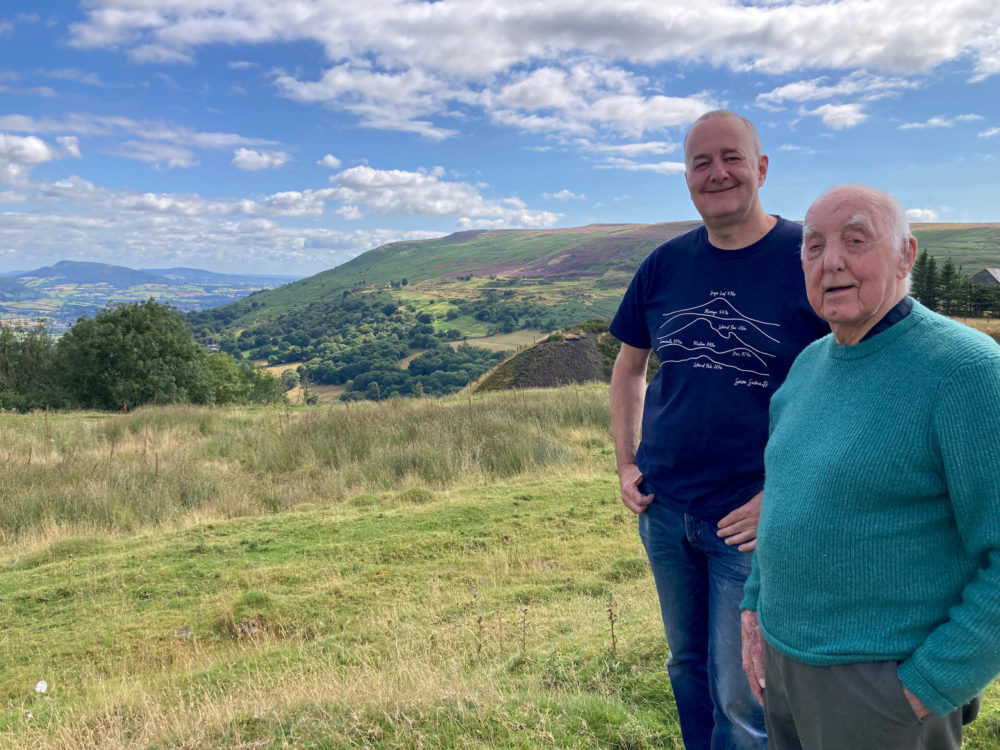
During the writing of this series, I was joined for several walks by Jon Gwillym, whose father Roy was born at Long Row, Pwll-du and on one occasion I got to meet Roy just where his family house once stood as well.
I have only met Jon just a couple of times, but I believe I know him well enough now to say that Pwll-du holds a special place within his heart. He is passionate about the old village and dearly wants to preserve the memories that could otherwise become locked in time within the landscape.
Memories are so often more valuable than gold and precious gemstones, but at the same time they are also fragile and easily lost. They require a deal of dedication and patience to preserve. Jon has done that rare and special thing; he has talked to his father about his childhood memories of living at Long Row, Pwll-du and recorded them.
There were thirty houses at Long Row, constructed in strips of ten, changing angle ever so slightly every ten to give the impression of being curved. Each row of ten had its own communal bake house, each equipped with two ovens, where originally much of the cooking would have taken place. It was only later that stoves and ranges were installed in the terraces. Jon recalled his father saying that in those days if you had a lot of snow, then you could have snow for weeks.
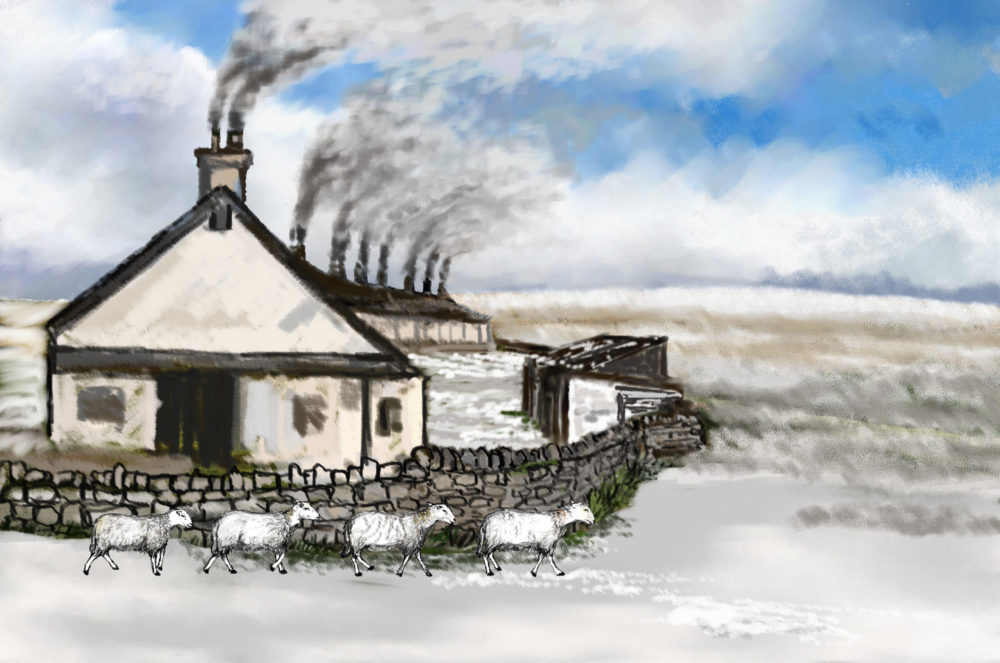
In all there were six children in the Gwillym family. The oldest three, Hilda, Des and Dick had all left home whilst his father Roy was a boy. Roy, who is 89 years old, is the oldest half of a set of twins who were born at 7/8 Long Row, Pwlldu. Ron, his little twin brother, came along only minutes later, with the youngest, Max completing a trio of young lads, coming along a few years later. I don’t think there can ever have been a dull moment in the house!
Getting just a sense of the family, the names and the community brought the landscape to life for me in a very special way. Each time I have walked there since, our conversations about Pwll-du come back into my mind and the village comes to life in my imagination.
Amgueddfa Cymru
Art has always been ‘my thing’ and I often like to reference the paintings of the great artists in my local landscape in my articles. This is a passion that began with my introduction to the Impressionist and Post-Impressionist works on exhibition at Amgueddfa Cymru, The National Museum of Wales, Cardiff when I was a young lad.
It was such a pleasure and a privilege to be given permission by Kay Kays, Copyright & Licensing Officer for Amgueddfa Cymru to include photographs of some of these amazing paintings in my article ‘Finding The Great Artist In Your Local Landscape’.
I have admired the work of Paul Cezanne for such a very long time. To be able to show local places like Tyla Quarry, near Blaenafon where I see iconic motifs that would be worthy subject matter for the great man alongside one of his paintings of Mont Sainte-Victoire will be something that I will always treasure.
Image 10 – ‘The François Zola Dam’, about 1879, Oil on canvas, Paul Cézanne. Bequeathed by Gwendoline Davies. Reproduced by kind permission of Amgueddfa Cymru, The National Museum of Wales. & ‘Tyla Quarry and Sketc’h by Tom Maloney. 17th September 2019
Diolch yn fawr iawn
So, it just remains for me to say thank you to everyone who has contributed to ‘Y Filltir Sgwâr’, to Jon Gower whose idea inspired the series, to Nation Cymru for hosting the weekly articles and most importantly to you and everyone who has taken the time to read my little offerings.
It has been a privilege indeed to share this landscape with Nation Cymru.
Read all the articles in the Y Filltir Sgwâr here.
Support our Nation today
For the price of a cup of coffee a month you can help us create an independent, not-for-profit, national news service for the people of Wales, by the people of Wales.





Thank you for this fine series, very much a high point of the week.
i hope you will continue your writing, you capture the past and present of our country so well.
Diolch yn fawr iawn Chris – It is so kind of you to take the time to reply with these lovely comments, which are very much appreciated. I hope to continue sometime in the near future with another project.
I have really enjoyed these article. Thank you Tom for writing them and thank you Nation Cymru for publishing them. Diolch yn fawr iawn.
Diolch yn fawr iawn i ti Ann. I do feel so fortunate to have been able to share this beautiful landscape. It has been a pleasure and a privilege really to see them published on Nation Cymru
An excellent series. I’ve enjoyed reading each one and seeing the sketches that bring to life the past history of the area. well done.
Diolch yn fawr iawn. I am so glad that you enjoyed reading the articles and seeing the sketches. Many thanks again
Diolch yn fawr iawn Tom & Nation Cymru, I walked the old railway line from Blaenafon to Pont-y-pwl again yesterday (just for the hell of it tbh), I have learnt so much more of this area through these articles that it has inspired me to make a start on venturing off the beaten track come the drier weather & let my senses drink in the geography & history that lies around us, usually hidden by nature reclaiming what was once lost. All the very best to you Tom & once again, diolch yn fawr iawn.
Diolch yn fawr iawn Alan. There is such a lot to enjoy in this wonderful landscape and I have to say I have enjoyed your informative replies as well. Such a good way to put things Alan – ‘let my senses drink in the geography and history’ – that’s just what it’s about.
Well done Tom, an excellent series of articles. The hard work you put into each one has certainly paid off. Local history at its best.
Diolch yn fawr iawn Mike and thank you too so much for providing the inspiration and the knowledge for the article about The British, Abersychan. There is such a lot of history that is hidden in the landscape. You kindly provided the keys to unlock some of that history.
Diolch yn fawr Tom. I have really enjoyed this series as my son has recently moved in to Baileys Terrace Cwmffrwdoer and I have been forwarding this series to him. He is a keen walker and he has loved reading about his new Milltir sgwar.
Hwyl fawr
Diolch yn fawr iawn i ti – so glad that you have enjoyed the series and that you forwarded the articles to your son as well. It’s such a pleasure to be able to share this wonderful landscape.